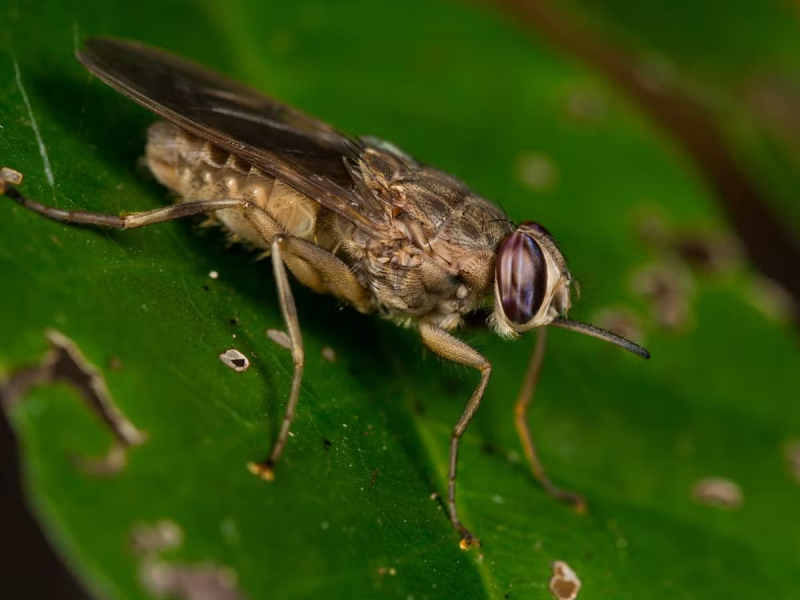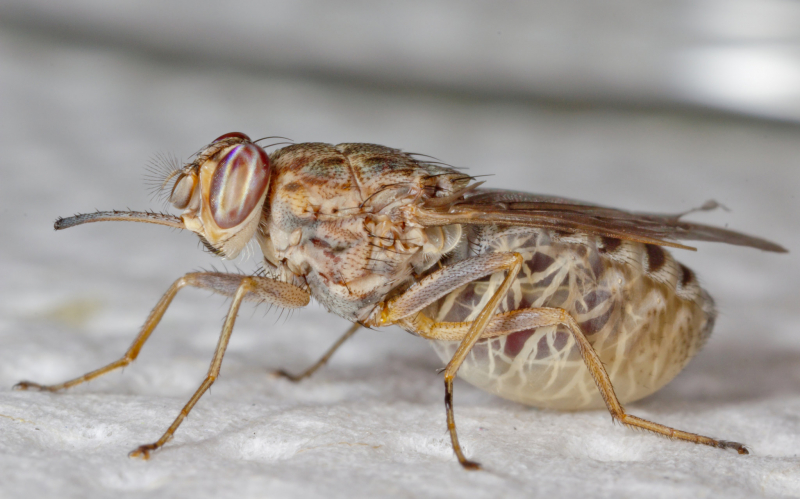Tsetse Fly

Large biting flies called tsetse, or tik-tik flies, are common throughout tropical Africa. All of the species in the genus Glossina, which are assigned to their own family, Glossinidae, are known as tsetse flies. Tsetse is obligatory parasites that must consume the blood of vertebrate creatures in order to survive. Because of their significance in disease transmission, tsetse has been the subject of in-depth research. They are the biological carriers of trypanosomes, which cause human sleeping sickness and animal trypanosomiasis, and have a significant economic impact in sub-Saharan Africa. Tsetse is multivoltine and has a lengthy lifespan; they can produce up to 31 broods in their lifetimes, with an average of four each year.
There are two characteristics that make tsetse flies distinct from other big insects. Tsetse entirely folds their wings when they are sleeping, allowing them to lie one wing directly on top of the other over their abdomens. Tsetse also has a lengthy proboscis that sticks straight out in front and is connected to the bottom of their heads by a characteristic bulb. In Germany and the United States, rocks dating to the Paleogene period have yielded fossilized tsetse. There are currently 23 identified species of tsetse flies in Africa and Arabia.











